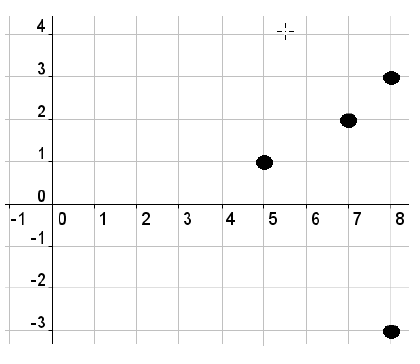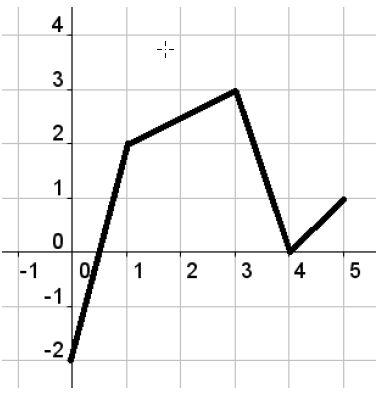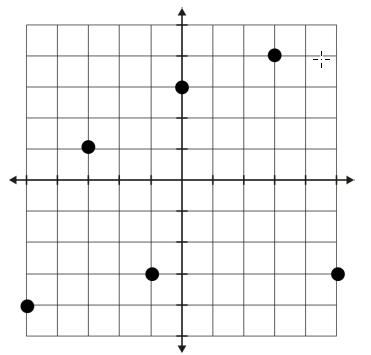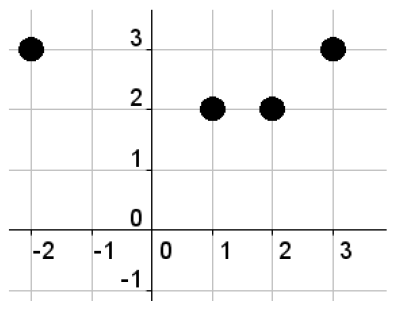This word is used to describe the set of all inputs for a function.
What is the domain?
Is the following relation a function?
(1, 0), (2, 2), (3, 4)?
Yes
f(3) if f(x) = 2x +1
What it 7?
Find the DOMAIN:
{(-2, 4), (3, 2), (2, 10)}
What is {-2, 3, 2)?
f(12) if f(x) = 3x -5
31
This word is used to describe the set of all outputs of a function.
What is the range?
Is the following relation a function?
(1, 1), (4, 1), (5, 2), (1, 2), (2, 5)?
No
Let f(x) = (x/4) + 1; find f(12).
What is 4?
Find the RANGE:
{(-2, 4), (3, 2), (2, 10)}
What is {4, 2, 10}?
f(5) if f(x) = 2x+8
18
This word describes a relation that pairs each x value with only one y value.
What is a function?
Does the following table represent a function?
x y
1 2
2 5
6 2
2 9
5 1
No
Let f(x)=3x+2; find f(-6)
What is -16?
Find the DOMAIN:
x y-1 -4
0 1
2 5
4 6
What is {-1, 0, 2, 4}?
What is the function rule being represented by this graph?
What is f(x) = x + 6
This word describes a relationship between two sets of numbers.
What is a relation?
Is this a function and WHY?

What is no, because the input "8" has two outputs.
Domain: {-2, -1, 0, 1, 2}
x | f(x)
-2 --> -12
-1 --> -9
0 --> -6
1 --> -3
2 --> 0
Find the RANGE:

What is {-2, 2, 3, 1}
Graph the function.
f(x) = 7x - 1
Domain: {-1, -2, -3, -4, -5}
See boards.
We use this word to describe a function that spits out the same answer, regardless of the input.
Ex. f(x) = 6
What is spam?
Is this a function and why?

What is yes, because each input has only one output.
x y
0 3
2 7
4 11
6 15
8 19
What is f(x) = 2x + 3
Find the DOMAIN:

What is {-2, 2, 3}?
Graph the function.
f(x) = -3x + 3
Domain: {1, 2, 3, 4, 5}
Yes